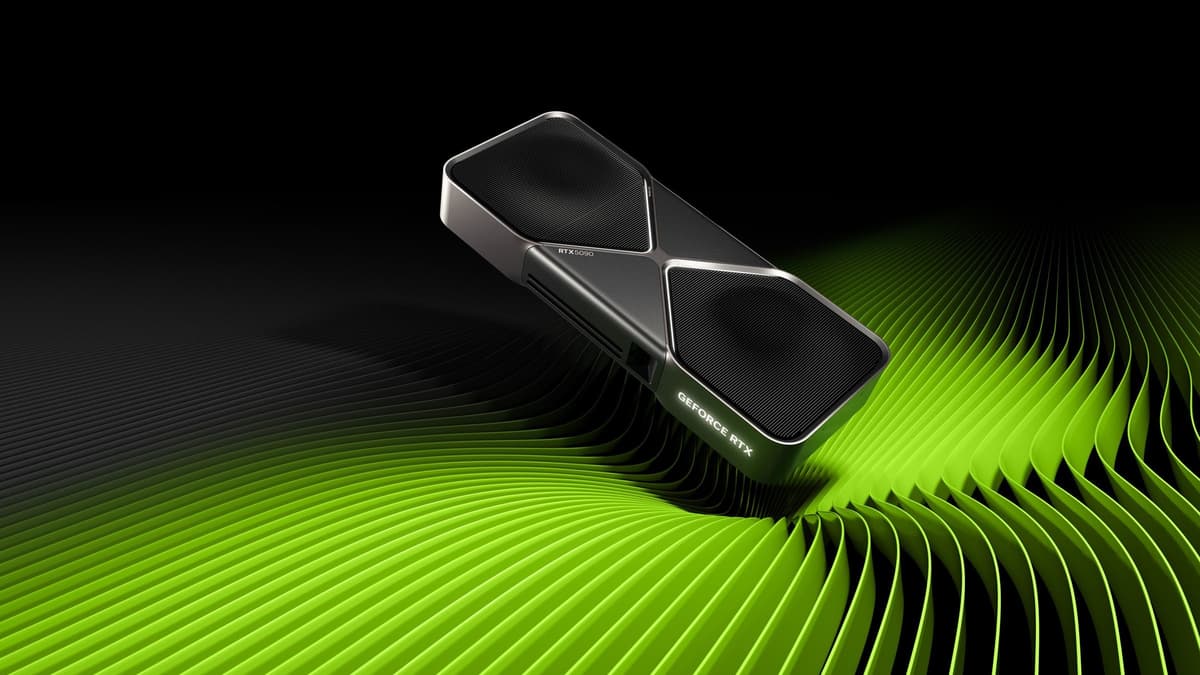Nvidia Announces Their New GeForce 50-Series ‘Blackwell’ Graphic Cards
Nvidia may be primarily an AI company, but it returned to its computer gaming roots by launching some powerful new GPUs.

Only a few years ago, Nvidia was a gaming company. They made server-grade graphics cards — GPUs — for commercial software modeling, but this was a relatively small business. Most of their income, attention, and value came from PC gamers with their G-Force division; therefore, most people watching their presentation at the “Consumer Electronics Show” were computer gamers looking to buy a new graphics card.
In the intervening years since their last graphics card release, the 40 series, Nvidia’s place in the world has dramatically changed. As companies rushed into AI investment, wanting to throw Large Language Models into every software function possible, they needed thousands of palates of GPUs, and Nvidia was the biggest store in town. Once a gaming company, Nvidia became the chief shovel manufacturer for the AI gold rush. At the 40 series cards launch in 2022, Nvidia sold for $11 a share. Today, the share price hovers around $140.
But, they still make gaming products, and though their CES presentation was focused on AI implementations, it opened with the most exciting “consumer product,” their new gaming-focused “50” series GPUs. Yes, millions of these will wind up in servers, but many gamers will buy them too.
Though more 50-series cards will release down the line, the initial line-up is comprehensive and — with the use of their newly improved DLSS 4 AI frame-generation technology — meant to be twice as fast as their previous generation counterparts, which were already pretty damn impressive.
The current entry-level model is the RTX 5070, starting at $549, and CEO Jensen Huang said on stage that — thanks to AI — it will be as fast as the $1,500 RTX 4090. In real-world usage, this may be true in at least some games, but it’s not down to the raw performance of the chip, which can’t compare with the specs of the 4090. Instead, this is because DLSS is so much more powerful than it used to be, and the chips are designed with that as a focus, rather than other raw graphics rendering technology like ray-tracing.
For those unfamiliar with it, DLSS is a form of AI-upscaling that is enabled through collaboration with game developers. To make it work, they run their game natively on a supercomputer and then train an AI model on that footage so that it knows what the game should look like. Then, when you play that game on your less powerful computer, DLSS can AI generate frames based on your gameplay, knowing what the game should look like based on its training. The result is so indistinguishable from native footage that I never game without it on. To some, this is “faking” the performance; but all I care about is that my games look good and play smoothly, and theoretically, DLSS should allow this $549 card to do that as well as a $1,500 card.
Raw specifications will still affect the quality of footage it can generate and how many frames it can pump out, and the 5070 is a good improvement here compared to the last generation 4070. It has 6,144 CUDA cores, 12GB of GDDR7 — with a memory bandwidth of 672 GB/sec — and a total power of 250 watts, meaning you only need a 650-watt power supply. This will sell well, and if the performance is as good as advertised, custom, fast gaming computers should get a lot cheaper.
One notch up is the RTX 5070 Ti, at $749, with 8,960 CUDA cores and 16GB of GDDR7 memory at 896GB/s. It needs 300 watts, so Nvidia suggests a 750-watt power supply, and both go on sale at the end of February.
If you can’t wait though, Nvidia will sell you their new high-end GPUs this month; and they’re damn impressive.
The high-end gaming staple is the RTX 5080. For $999 — less than the last generation 4080, which started at $1,200 — this is meant to have double the performance, and that’s not down to AI upscaling, as the specifications line up. It has 16GB of GDDR7 memory, at 960GB/sec, and 10,752 CUDA cores, with a total power use of 360 watts, and Nvidia recommends an 850-watt power supply.
The flagship ultimate card is the 5090, which nothing else on the market can compete with, and because of that, Nvidia can charge $2,000 for one. That’s a hefty price hike over the 5090 — and hard to justify for a home gamer compared to the 50% cheaper 5080 —but the raw specifications are astonishing. It comes with 21,760 CUDA cores, 32GB of GDDR7 — with a bandwidth of up to 1,792GB/sec — and the Founders Edition card is far smaller than the 4090, now being a two-slot GPU. It has a total power of 575 watts, and Nvidia recommends a 1000-watt power supply.
On paper, these are damn impressive cards, with power far exceeding previous generations; but which will be worth the purchase is something that reviews will have to conclude.
On paper, the 4090 was a significant upgrade over the 4080, but there wasn’t anywhere near as substantial a performance difference in real-world gaming use. Will the 5090 be the same? Given that it’s twice the price, it’s an important question.
For the average consumer, the 5070 Ti has the biggest question mark. Unless it’s a big step in performance, it can’t be worth the 50% price jump over the base 5070. Then again, if it’s close to the 5080 in real-world use, you’re getting similar performance for a $250 discount.
Regardless, this is an impressive upgrade over the 40 series graphics cards, which were still far ahead of their competitors. I’m looking forward to testing them all.

